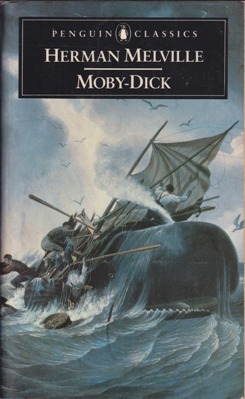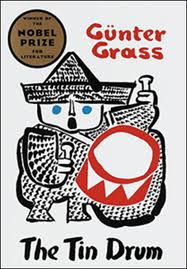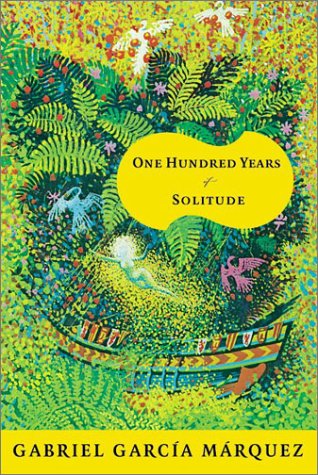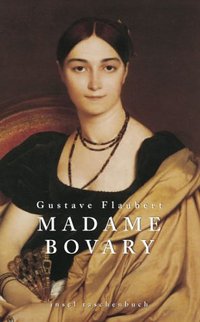Author Photo And Bio
 1. Great Expectations by Charles Dickens (1860–61). Dickens gives a twist to an ancient storyline —of the child of royal birth raised in humble surroundings. Looking back on his life, Pip describes his poor youth near marshes in rural England —his chance encounter with a murderous convict, his experiences with the strange Miss Havisham, who always wears a wedding dress, and his love for her beautiful adopted daughter Estella. As he approaches adulthood, Pip learns that he has a secret benefactor who arranges opportunities for him in London, wherein lies the tale, and the twist.
1. Great Expectations by Charles Dickens (1860–61). Dickens gives a twist to an ancient storyline —of the child of royal birth raised in humble surroundings. Looking back on his life, Pip describes his poor youth near marshes in rural England —his chance encounter with a murderous convict, his experiences with the strange Miss Havisham, who always wears a wedding dress, and his love for her beautiful adopted daughter Estella. As he approaches adulthood, Pip learns that he has a secret benefactor who arranges opportunities for him in London, wherein lies the tale, and the twist.
 2. Tess of the D’Urbervilles by Thomas Hardy (1891). When Tess’s mother learns that her humble family has lofty bloodlines, she sends her daughter out to cadge funds and land a rich husband. Instead Tess suffers cruel mistreatment and becomes pregnant. The baby’s death unleashes torrents of grief, guilt, and religious doubt. However, Hardy’s grim tale is lightened by his loving descriptions of the English landscape and his humorous rendering of local talk.
2. Tess of the D’Urbervilles by Thomas Hardy (1891). When Tess’s mother learns that her humble family has lofty bloodlines, she sends her daughter out to cadge funds and land a rich husband. Instead Tess suffers cruel mistreatment and becomes pregnant. The baby’s death unleashes torrents of grief, guilt, and religious doubt. However, Hardy’s grim tale is lightened by his loving descriptions of the English landscape and his humorous rendering of local talk.
 3. Moby-Dick by Herman Melville (1851). This sweeping saga of obsession, vanity, and vengeance at sea can be read as a harrowing parable, a gripping adventure story, or a semiscientific chronicle of the whaling industry. No matter, the book rewards patient readers with some of fiction’s most memorable characters, from mad Captain Ahab to the titular white whale that crippled him, from the honorable pagan Queequeg to our insightful narrator/surrogate (“Call me”) Ishmael, to that hell-bent vessel itself, the Pequod.
3. Moby-Dick by Herman Melville (1851). This sweeping saga of obsession, vanity, and vengeance at sea can be read as a harrowing parable, a gripping adventure story, or a semiscientific chronicle of the whaling industry. No matter, the book rewards patient readers with some of fiction’s most memorable characters, from mad Captain Ahab to the titular white whale that crippled him, from the honorable pagan Queequeg to our insightful narrator/surrogate (“Call me”) Ishmael, to that hell-bent vessel itself, the Pequod.
 4. The Scarlet Letter by Nathaniel Hawthorne (1850). Hester Prynne is a sinner in the hands of seventeenth-century Puritans. Forced to wear the letter “A” for adultery, she is publicly disgraced and shunned. Despite her condemnation, Hester refuses to reveal the identity of her lover. Her husband, Roger Chilling worth, returns unexpectedly and seeks revenge. Chillingworth is a torment to the guilt-stricken minister, Arthur Dimmesdale, as is Pearl, the child born of Hester and Dimmesdale’s adultery. Ultimately, it is the fallen lovers, not the Puritans, who come to understand the nature of sin and redemption.
4. The Scarlet Letter by Nathaniel Hawthorne (1850). Hester Prynne is a sinner in the hands of seventeenth-century Puritans. Forced to wear the letter “A” for adultery, she is publicly disgraced and shunned. Despite her condemnation, Hester refuses to reveal the identity of her lover. Her husband, Roger Chilling worth, returns unexpectedly and seeks revenge. Chillingworth is a torment to the guilt-stricken minister, Arthur Dimmesdale, as is Pearl, the child born of Hester and Dimmesdale’s adultery. Ultimately, it is the fallen lovers, not the Puritans, who come to understand the nature of sin and redemption.
 5. David Copperfield by Charles Dickens (1849–50). Dickens’s most autobiographical novel chronicles his hero’s ever-changing fortunes, beginning with his famous opening line, “I am born.” As a boy, David is swept between school and the workhouse; later, between the law and literature; and then between his vapid wife Dora and his true love Agnes. Ingratiating Uriah Heep, talented Mr. Micawber, devoted nurse Peggoty, and willing Barkis are some of the most memorable characters in the entire Dickens canon.
5. David Copperfield by Charles Dickens (1849–50). Dickens’s most autobiographical novel chronicles his hero’s ever-changing fortunes, beginning with his famous opening line, “I am born.” As a boy, David is swept between school and the workhouse; later, between the law and literature; and then between his vapid wife Dora and his true love Agnes. Ingratiating Uriah Heep, talented Mr. Micawber, devoted nurse Peggoty, and willing Barkis are some of the most memorable characters in the entire Dickens canon.
 6. The Mayor of Casterbridge by Thomas Hardy (1886). In the first chapter Michael Henchard sells his wife and child at a country fair. When he meets his forsaken wife Susan and daughter Elizabeth-Jane years later, he is no longer a drunken hay-trusser but mayor of his town. Henchard has improved his position in life but not his disposition, and this tragedy of misplaced pride, torturous guilt, and immense bitterness is vintage Hardy.
6. The Mayor of Casterbridge by Thomas Hardy (1886). In the first chapter Michael Henchard sells his wife and child at a country fair. When he meets his forsaken wife Susan and daughter Elizabeth-Jane years later, he is no longer a drunken hay-trusser but mayor of his town. Henchard has improved his position in life but not his disposition, and this tragedy of misplaced pride, torturous guilt, and immense bitterness is vintage Hardy.
 7. The Tin Drum by Günter Grass (1959). This picaresque novel depicts the rise of Nazism in Germany and its terrible consequences through the adventures of Oskar Matzerath, “the eternal three-year-old” who stunts his growth at three feet and uses his tin drum and piercing screams as weapons against a mad world. Chilling and absurd, teeming with black comedy and dark insights into the human soul, The Tin Drum is both an artistic triumph and an act of reclamation. As the Swedish Academy observed while presenting Grass with the Nobel Prize for Literature in 1999, the novel “comes to grips with the enormous task of reviewing contemporary history by recalling the disavowed and the forgotten: the victims, losers, and lies that people wanted to forget because they had once believed in them.”
7. The Tin Drum by Günter Grass (1959). This picaresque novel depicts the rise of Nazism in Germany and its terrible consequences through the adventures of Oskar Matzerath, “the eternal three-year-old” who stunts his growth at three feet and uses his tin drum and piercing screams as weapons against a mad world. Chilling and absurd, teeming with black comedy and dark insights into the human soul, The Tin Drum is both an artistic triumph and an act of reclamation. As the Swedish Academy observed while presenting Grass with the Nobel Prize for Literature in 1999, the novel “comes to grips with the enormous task of reviewing contemporary history by recalling the disavowed and the forgotten: the victims, losers, and lies that people wanted to forget because they had once believed in them.”
 8. One Hundred Years of Solitude by Gabriel García Márquez (1967). Widely considered the most popular work in Spanish since Don Quixote, this novel —part fantasy, part social history of Colombia — sparked fiction’s “Latin boom” and the popularization of magic realism. Over a century that seems to move backward and forward simultaneously, the forgotten and offhandedly magical village of Macondo — home to a Faulknerian plethora of incest, floods, massacres, civil wars, dreamers, prudes, and prostitutes — loses its Edenic innocence as it is increasingly exposed to civilization.
8. One Hundred Years of Solitude by Gabriel García Márquez (1967). Widely considered the most popular work in Spanish since Don Quixote, this novel —part fantasy, part social history of Colombia — sparked fiction’s “Latin boom” and the popularization of magic realism. Over a century that seems to move backward and forward simultaneously, the forgotten and offhandedly magical village of Macondo — home to a Faulknerian plethora of incest, floods, massacres, civil wars, dreamers, prudes, and prostitutes — loses its Edenic innocence as it is increasingly exposed to civilization.
 9. The Deptford trilogy by Robertson Davies (1983). A single question—“Who killed Boy Staunton?”—hovers over this trilogy that begins when ten-year-old Percy “Boy” Staunton throws a rock-filled snowball at his friend Dunstan Ramsay. Instead he hits Mary Dempster, who soon gives birth, prematurely, to a boy with birth defects. The novels Fifth Business, The Manticore, and World of Wonders chronicle the lives of these characters and their families, developing themes of guilt, love, and responsibility while detailing “the consequences that can follow any single action.”
9. The Deptford trilogy by Robertson Davies (1983). A single question—“Who killed Boy Staunton?”—hovers over this trilogy that begins when ten-year-old Percy “Boy” Staunton throws a rock-filled snowball at his friend Dunstan Ramsay. Instead he hits Mary Dempster, who soon gives birth, prematurely, to a boy with birth defects. The novels Fifth Business, The Manticore, and World of Wonders chronicle the lives of these characters and their families, developing themes of guilt, love, and responsibility while detailing “the consequences that can follow any single action.”
 10. Madame Bovary by Gustave Flaubert (1857). Of the many nineteenth-century novels about adulteresses, only Madame Bovary features a heroine frankly detested by her author. Flaubert battled for five years to complete his meticulous portrait of extramarital romance in the French provinces, and he complained endlessly in letters about his love-starved main character — so inferior, he felt, to himself. In the end, however, he came to peace with her, famously saying, “Madame Bovary: c’est moi.” A model of gorgeous style and perfect characterization, the novel is a testament to how yearning for a higher life both elevates and destroys us.
10. Madame Bovary by Gustave Flaubert (1857). Of the many nineteenth-century novels about adulteresses, only Madame Bovary features a heroine frankly detested by her author. Flaubert battled for five years to complete his meticulous portrait of extramarital romance in the French provinces, and he complained endlessly in letters about his love-starved main character — so inferior, he felt, to himself. In the end, however, he came to peace with her, famously saying, “Madame Bovary: c’est moi.” A model of gorgeous style and perfect characterization, the novel is a testament to how yearning for a higher life both elevates and destroys us.